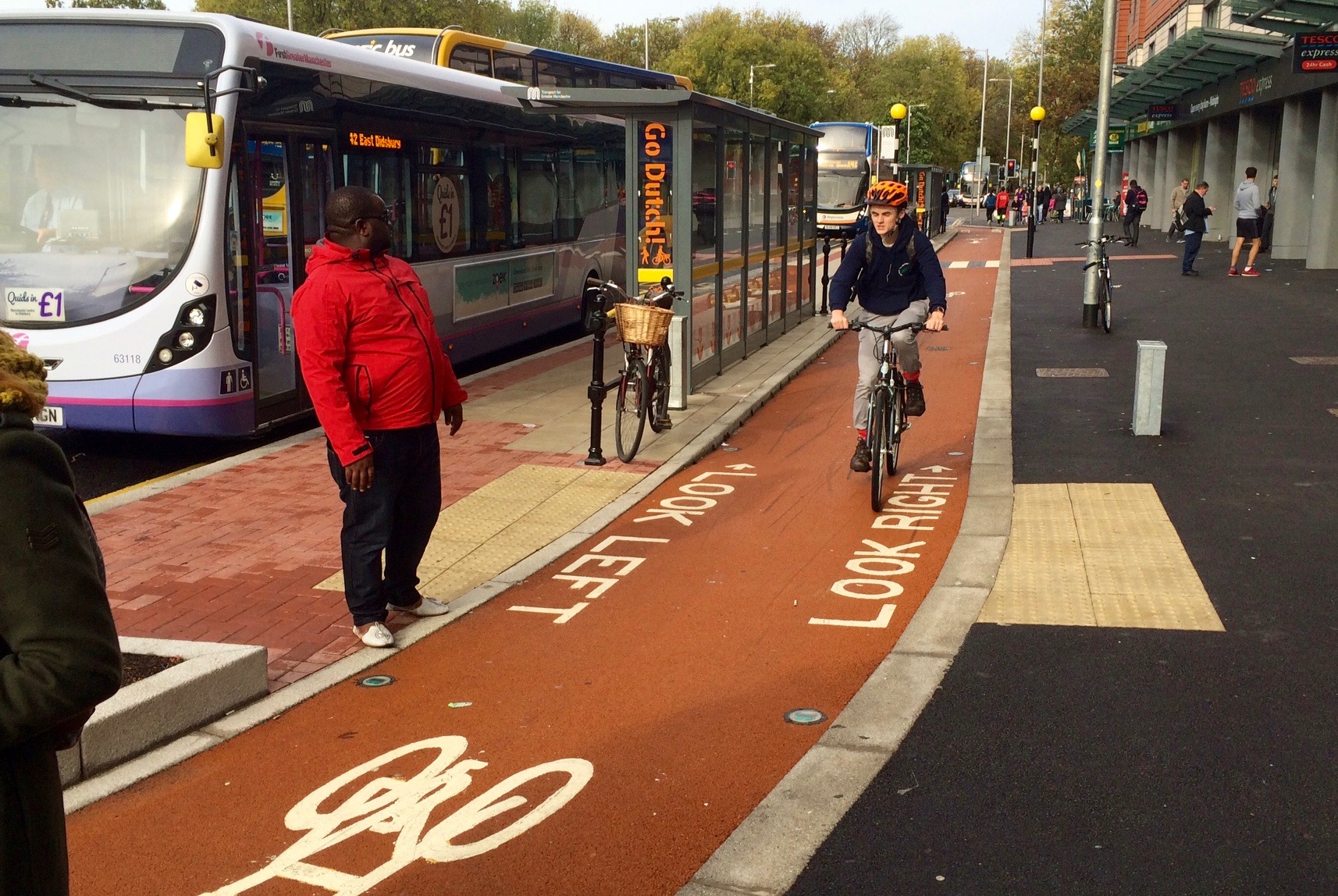
This Easter weekend, I visited family in Manchester, and took the opportunity to cycle down the Curry Mile. Manchester was one of the cities, along with Birmingham, to receive Cycle City Ambition Funding from central government, and I was interested to see what had been done with that money. I am sometimes (well, actually, often) accused of idolising the cycle infrastructure found in the Netherlands, and told that it can not be built here. Well, cycling down the Curry Mile I felt that I could have been in the Netherlands, and indeed the infrastructure was better than some that I have seen there (albeit not much of what I have seen there). We do now have Dutch-level infrastructure in a busy British shopping street that we can point to as an example of good practice.
I have put several photos at the end of this article, with extensive comments on each for you to read. For those who want to see more details, Greater Manchester Cycling Campaign have a PDF of the plans on their website - See the Oxford Road and Wilmslow Road Corridor PDF on this page.
Some general points:
Firstly, the cycle lane is protected by parking and bus stops. That means that it is right up against the pavement, and the pavement is certainly not as wide as it could be. A shared use pavement in this same width would not have worked, in my opinion, because pedestrians would have spread across the whole space. I feel that the narrower width of the pavement does not matter, as pedestrians can use the whole width of the pavement in comfort. They do not have to worry about falling off the kerb and under a lorry, which is a worry for pavements that are next to the general motor traffic lanes. Having the clear separation between the pavement and cycle lane gives a better experience for cycle users as well, because even when pedestrians are walking in the cycle lane, it is much easier to ask them to move out of the way. On a shared use pavement, you can not ring your bell loudly without seeming very rude, but it would be acceptable on a cycle lane.
Secondly, the bus stops are 'floating', which means that the bus passengers have an area to stand and wait, but need to cross the cycle lane to get to and from the bus stop. Last November I got the opportunity to see a good example (the last photo on this page) further up Wilmslow Road, but on a section of road with very wide pavements. This time I could see floating bus stops implemented in a more confined space. The benefits are that the paths of buses and cycles do not cross as the buses pull into and out of the bus stops. Both bus drivers and cycle users therefore have less to worry about. Pedestrians are given clear crossing points and can predict where the cycles will be, which is an improvement over shared-sue pavement cycling. Further down Wilmslow Road there was an example of a bus-stop bypass in a very constrained environment, where the pavement could not be continued alongside the cycle lane. Even with pedestrians having to cross the cycle lane twice, I think that this compromise is acceptable because of the benefits it brings.
Thirdly, the parking spaces are outside the cycle lane, with the passenger door rather than the driver door opening into the cycle lane. Statistically, there are fewer passengers than drivers (think of all the single occupants in cars), so this reduces the risk of a cycle user being 'doored'. But also, the physical kerb separating the parking space and the cycle lane provides a buffer both for the passenger to stand in and to reduce the width of the door intruding into the cycle lane. This physical separation simply would not be possible if the cycle lane was on the outside of the parking, and drivers parking would have to look out for cycle users on the cycle lane.
Fourthly, drainage is a problem that will need to be planned for, as the carriageway appears to drain into the cycle lane and large stretches of standing water have already been reported along this road. In the photos you can see some of the puddles formed by the rain earlier in the day. This will cause a hazard in icy weather, as well as making cycle users unpopular when they splash pedestrians. Future projects will need to plan drainage better than this one has.
Finally, junctions are still an issue. While this scheme does have some good features to help cycle users at junctions, side roads still are being given wider mouths than they perhaps need. Having motor vehicles turning into a side-road at an inappropriate speed is a common cause of collisions for cycle users. There are measures that can be taken to combat this, but they involve either extra space or the inconveniencing of motor vehicles through the use of ramps. This is still a challenge in the UK and we do not yet have many good examples of best practice that we can point at.
Curry Mile photo 1
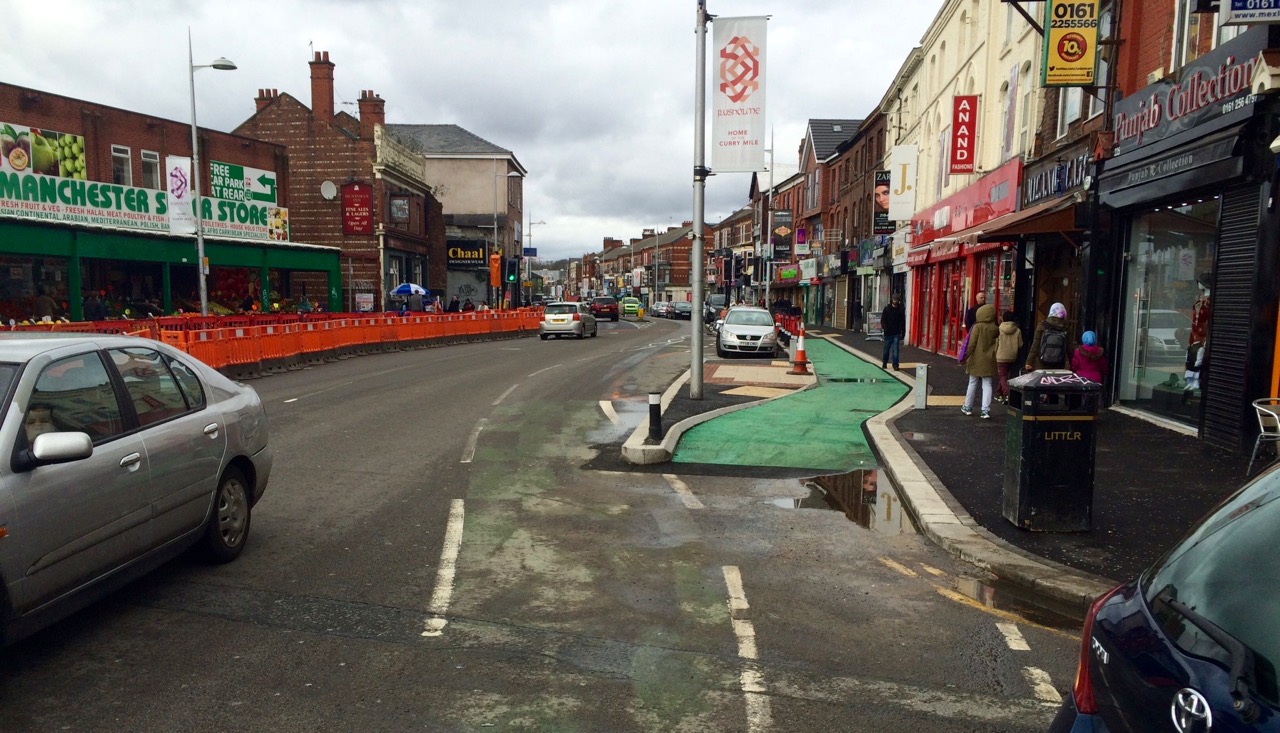
Curry Mile photo 2
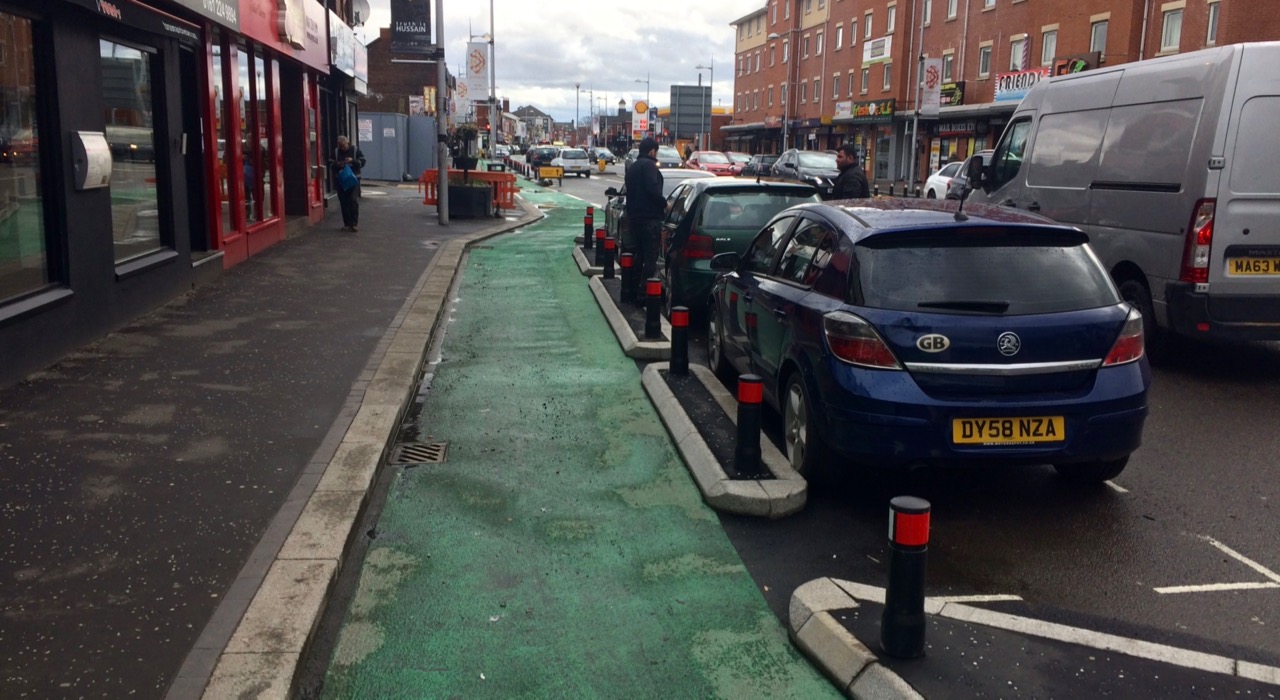
Curry Mile photo 3
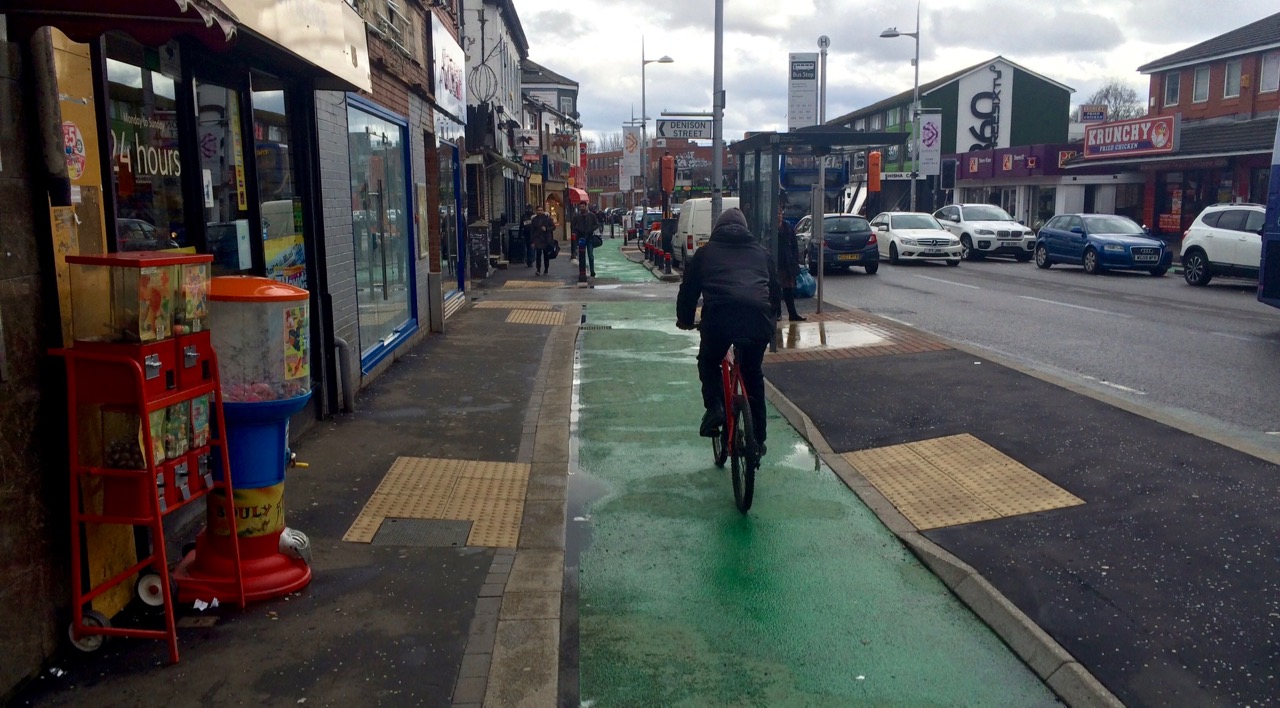
Curry Mile photo 4
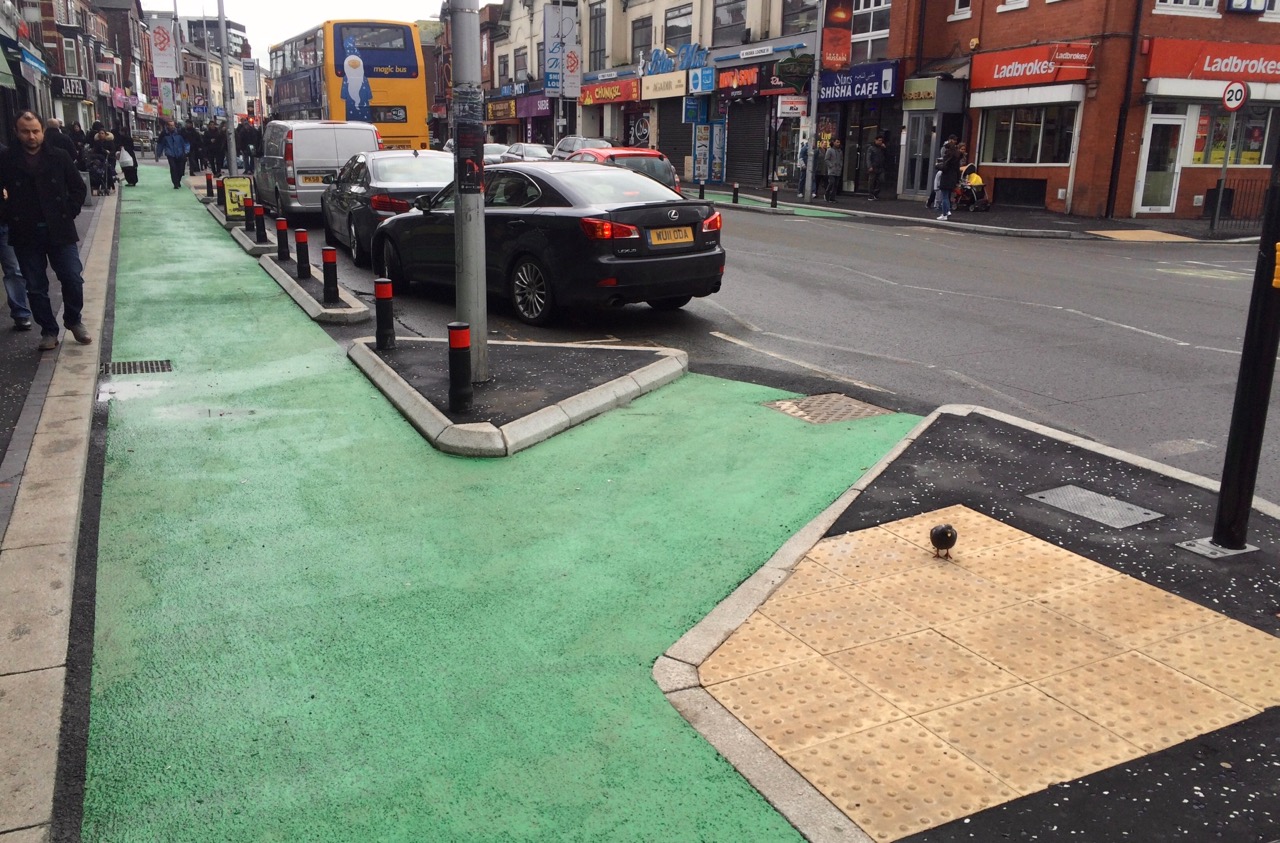
Curry Mile photo 5
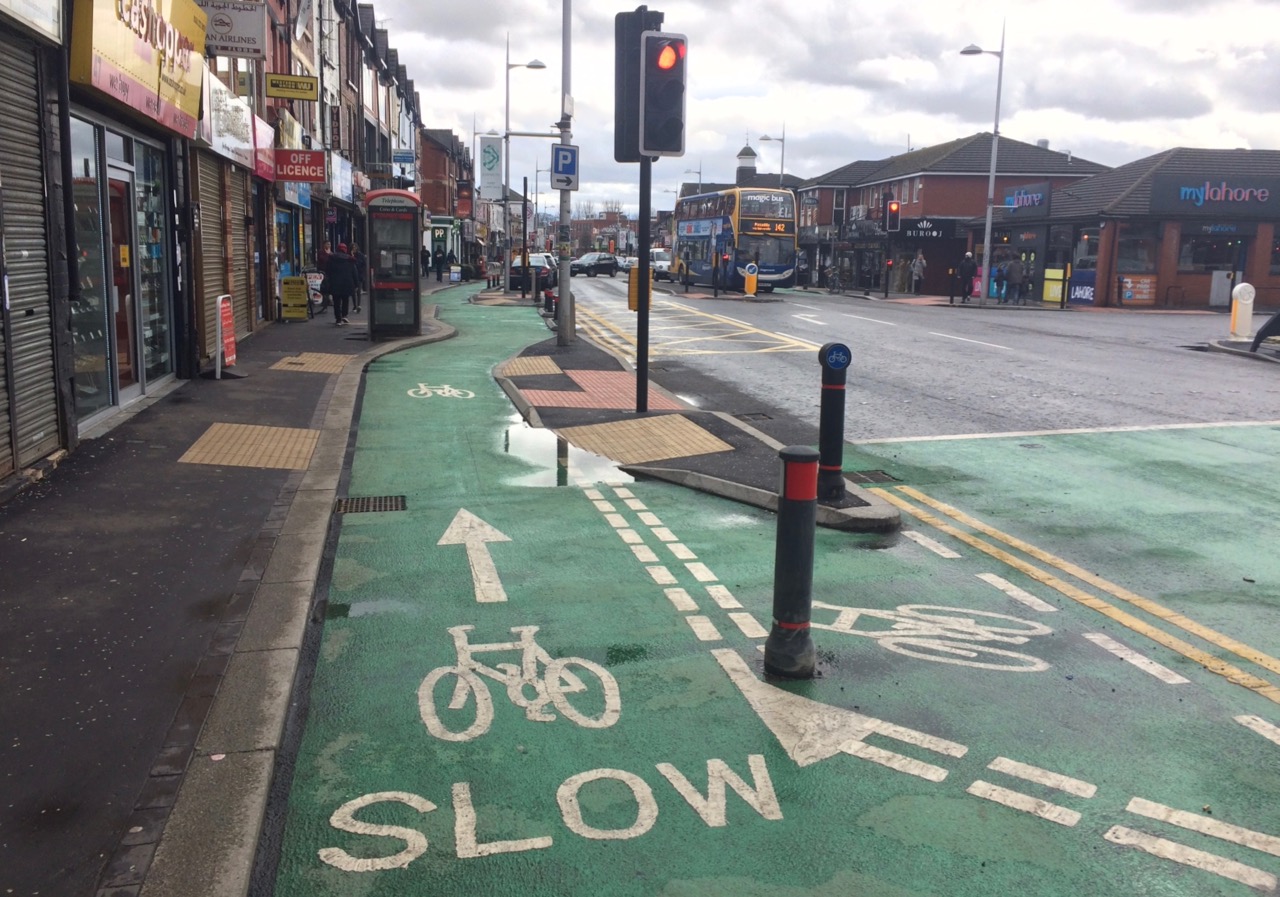
Wilmslow Road photo 1
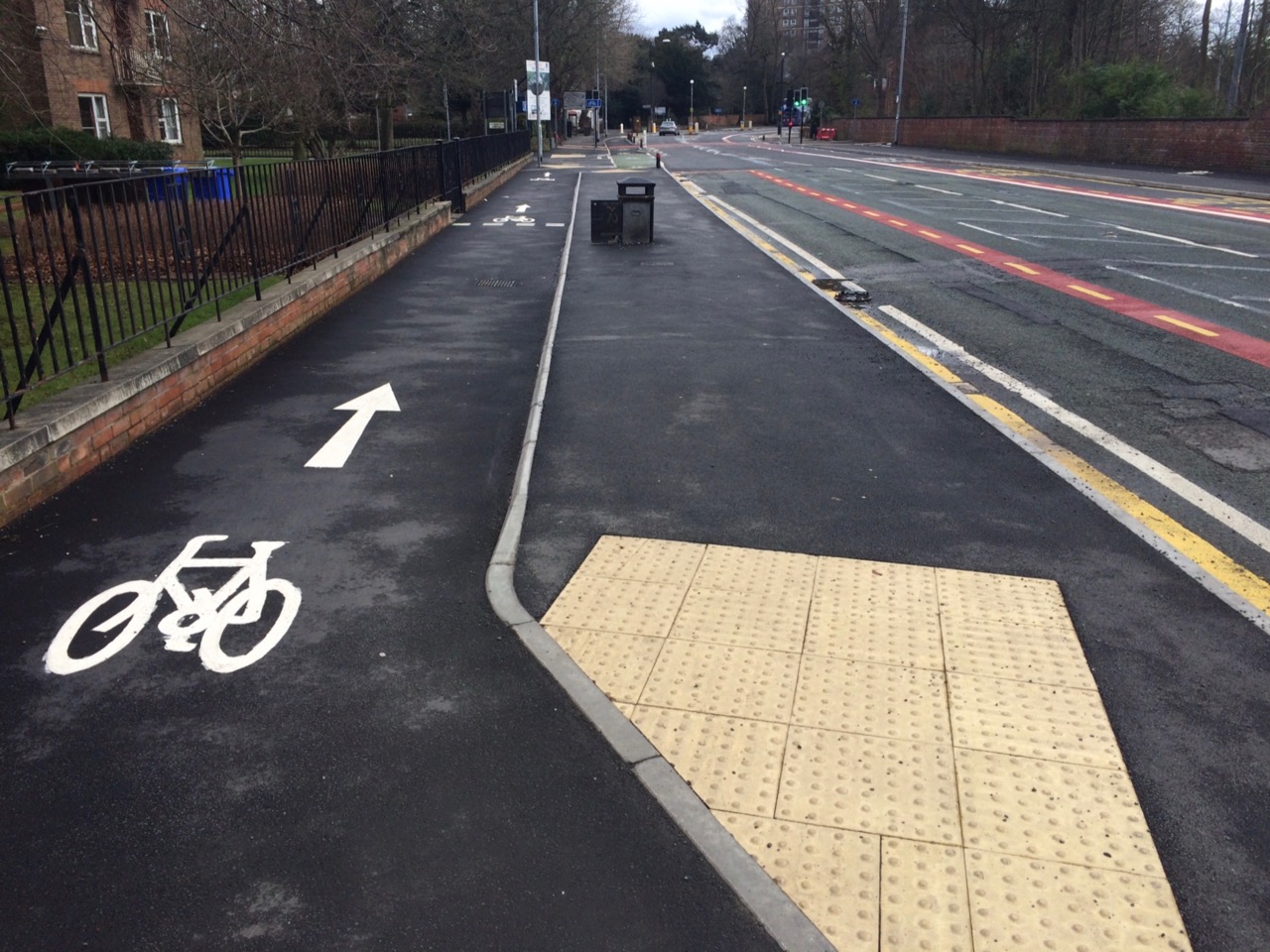
Wilmslow Road photo 2

Wilmslow Road photo 3

Bus Stop Bypass at the start of Wilmslow Road
